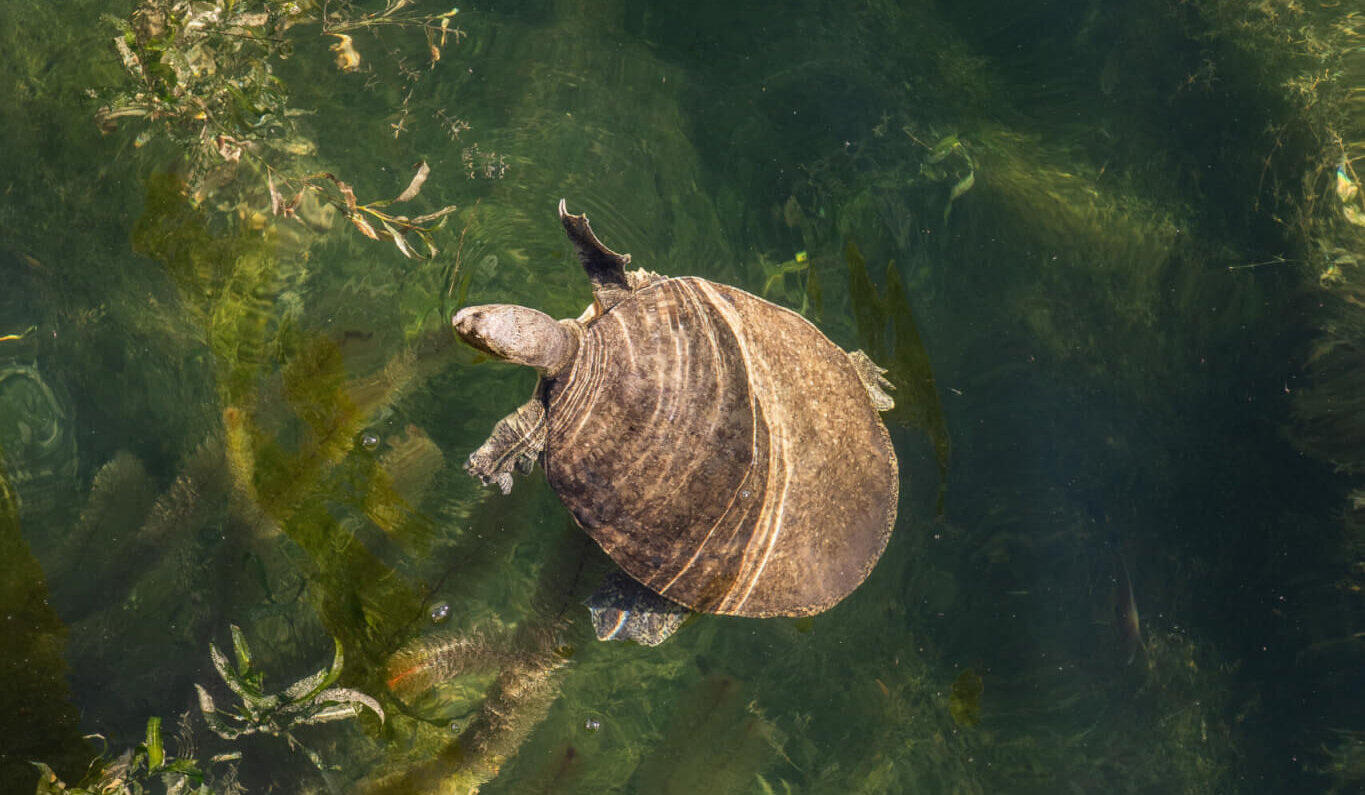
If you’re very lucky, while you’re eating lunch in Laity Lodge’s dining room, you’ll hear a commotion out on the balcony. Guests will be hanging over the rail, throwing cookies and bread into the Frio River. Beneath them you’ll see a very large turtle paddling peacefully through the waves, following trails of crumbs.
The creature in question looks to be a Guadalupe spiny softshell, a Texan native who thrives in clear, slow-moving waters. Staff tradition says she is a female turtle (from photos, an expert agrees that there is “evidence to guess this” due to her size and coloring). Females can live up to fifty years—or, approximately fifteen hundred Laity Lodge retreats.
We don’t have an agenda for this turtle—to say so would be hubris. She’s as far out of our control as rainfall or sunshine. Sometimes, a retreat is turtle-less, and only a few people know what they’re missing. Sometimes, she emerges from the watery deep to the cheers of every lunching guest.
What feels most special is when she appears just to you. Certain guests form a particular bond with the turtle—perhaps from the library balcony or even the dock. Seeing her on your own, without a crowd of bread-throwers around you, it feels like you’ve been singled out by someone important.
If you see her, you’ll find yourself wanting to give her a name. This happens whenever she’s seen at a retreat, so she may, in fact, be the most-named turtle in the Hill Country. We have a special fondness for the name Grace.
Does she care about us as much as we care about her? I doubt she’s writing a blog post for her turtle friends about the humans who throw crusts. In 1978, philosopher Thomas Nagel posed the question, “What is it like to be a bat?” It’s meant to be a confounding question. What is it like to be our turtle? She’s our neighbor, but it’s profoundly difficult to know what her world feels like.
Still, it’s hard for us not to call her “our turtle.” That doesn’t mean we own her, or pretend to any authority over her. There’s a wide gulf between turtlehood and humanhood. But whatever it’s like to be this turtle, we’re entangled with her life and her home, as she is in ours. Maybe someday we’ll know her name.